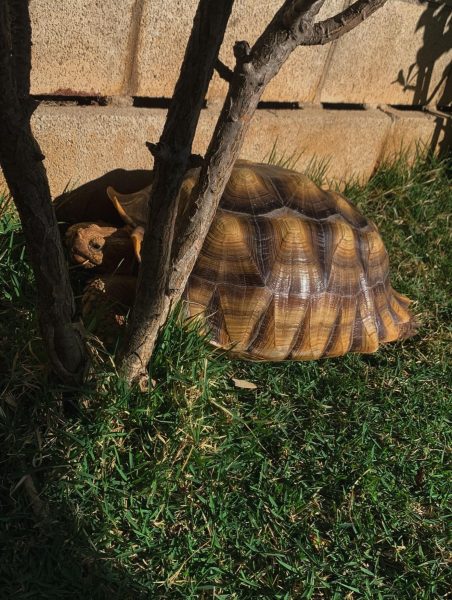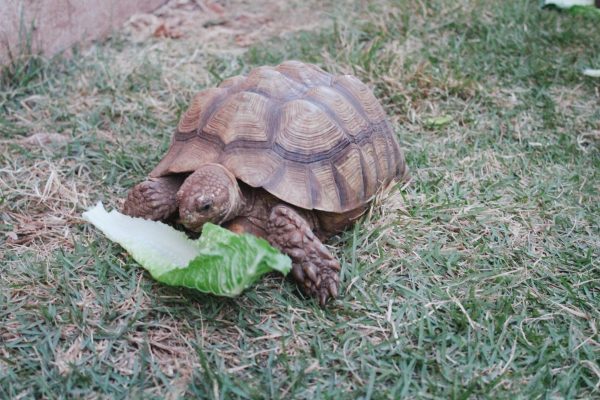At my house, it’s not uncommon to find red heads and sulcata tortoises roaming the yard and eating hibiscus flowers. Inside, tanks filled with fish as tiny as your fingertips to as long as your hands, sit next to the dinner table as my sister scarfs down leftovers from the fridge. In the garage, eight rabbits are asleep or eating hay. Upstairs, one might find four more tiny redhead tortoises and leopard tortoise

s eating a lettuce leaf, along with five more rabbits just hanging out.
As someone with more than 30 pets and a burning passion to pursue veterinary care, I decided to write an article that discusses these not-so-common household pets and how to care for them. This article is the second in a series and will focus on how to take care of tortoises.
When it comes to tortoises, you’d think they’d be slow eaters and walkers. But when you own them, they are not what the public eye sees them as. Before we start, tortoises and turtles are not the same. Tortoises and turtles are different. According to Nashville Zoo’s blog, tortoises have a more rounded shell that looks like a dome. However, turtles have flat shells with sharper edges to swim easier in the water. Tortoises also live on land, which gives them their front paw legs and back elephant hind legs. Turtles live in the sea, so in order to swim quicker, their arms and legs are flattened like a pancake to move freely under water.
Along with the tortoise’s distinct looks, there are more than 22 types of tortoise species ranging from a Galapagos tortoise to a pancake tortoise. According to Allturtle’s article “Tortoise Species”, these tortoises are ranked from easiest to take care of to most difficult.
“Most people use the term ‘turtle’ to refer to any reptile with a shell on its back, b

ut there are several differences between these two unique creatures,” Nashville Zoo said.
Although people may find it strange to own a tortoise, they are very low-maintenance and require little to no attention. According to the Green Lane Farm Team in their article “What Do Tortoises Eat?”, there are a couple of foods you can feed them. As an owner of 14 tortoises, I feed my pet tortoises lettuce, hay and grass, and for my red-head tortoises, they get a small treat like chicken or strawberries.
A blog from “The Birds and Exotics Veterinary Clinic in Green Neck, New York” discusses how to care for pet tortoise, like housing, enclosure and more. Indoors, tortoises need at least a five-by-five-foot’s worth of space to roam. However, tortoises can get big depending on their breed, so a backyard’s worth of space can be necessary. This is also necessary for their shells to harden underneath the sun in the morning and to regulate body temperature throughout the day. I keep my biggest sulcata tortoises in the backyard, where they roam and soak in the sunlight while my brother brings the smaller red-footed tortoises out to bask in the sun before I bring them in around the evening when I get home. Tortoises also require shelter for the night to be protected from not only other predators but also for warmth as a cold-blooded species. Their blog goes into further detail about housing, diet and when to schedule annual vet check ups or emergency check ups.
Tortoises, although seen as slow, can have the biggest personality and relate to a human like another being for its relaxation and happiness. The tortoises I have have tons of spunk, sass and exploration as any other animal out there.
Be on the lookout for more articles on where I share about how to take care of exotic animals.

























